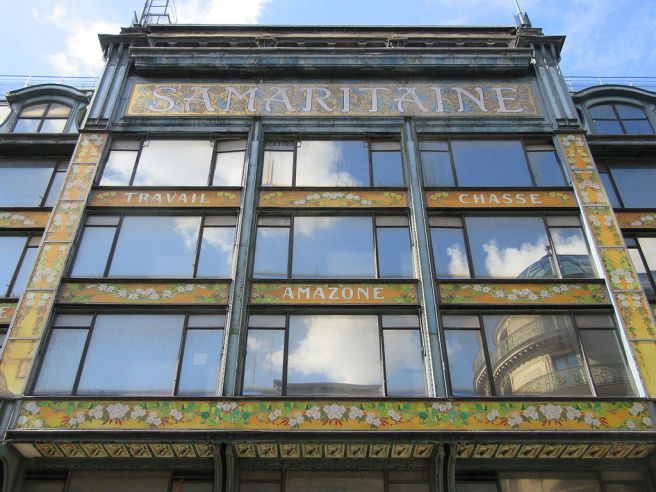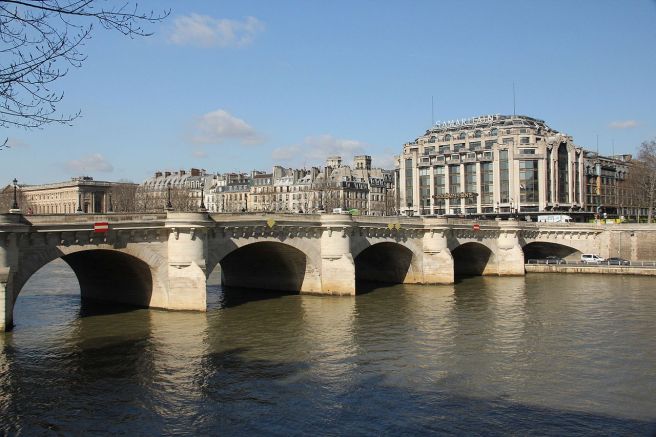
View of hospital from Kis–Sváb Hill, Copyright Globetrotter19
Szent János Hospital was founded in 1800, on the corner of Margit Körút (Boulevard) and Hattyú Utca (Swan Street). In 1820, there was new construction (including a statue of St. John of Nepomuk), and in 1873, the number of beds grew from 100 to 234. An 1887 resolution ordered the building of a new hospital, with 300 beds.
The new hospital, with 420 beds, opened 3 August 1898, to great ceremony. That year, the hospital began adding new departments to treat all the sick people of both Buda and Pest. It also served as a teaching hospital. Among the new departments were an X-ray lab (1910), a modern maternity ward (1935), venereal urology (1934), orthopaedic surgery (1918), and eye disorders (1898).

Entrance to Hospital in the Rock, 1944
Though the hospital was partly damaged during WWII, it wasn’t destroyed or bombed, and the doctors and nurses worked overtime to tend to all the wounded. They hid deserters, dissidents, and Jews, and Prof. Boldizsár Horváth saved a group being held hostage by the Óbuda brick factory. Sadly, the chief physician was taken away, another doctor was shot dead on hospital grounds, and not everyone from the brick factory was able to be saved.
During the Siege and Battle of Budapest, doctors and nurses also used the Hospital in the Rock (Sziklakórház), a hospital carved into the caverns under Buda Castle in the 1930s. By night, the dead were smuggled out and buried in bomb craters. There were times when, due to a total lack of food and supplies, hospital staff had to take them off dead bodies and sterilise them. Horses were also killed for food. It was only meant for 60–70 patients, but it treated up to 600.
Both hospitals again saw heavy use during the 1956 uprising. In late 1956, a spin-off, Royal Children’s Hospital, was created.

Copyright Solymári
During their stay in Pasarét in October–November 1945, my characters Caterina and Marie find temporary employment by Szent János Hospital. All hands are needed on deck, even though Caterina isn’t currently in possession of her medical license or anything else to prove she’s really a doctor. Marie is only 14, but she’s accepted too, since she served as Caterina’s assistant in three camps. They’re put to work with pediatric patients, much to sweet little Marie’s delight.

Copyright Pergl Pergl from On the move, Source Flickr
La Samaritaine is a massive Parisian department store founded in 1869 by husband and wife Ernest Cognacq and Marie-Louise Jaÿ. Ironically, Mme. Jaÿ was the first clothing vendor at rival department store Le Bon Marché. It’s in the First Arrondissement, not too far from Le Meurice and the Tuileries Garden.
The couple decided to transform their boutique into a department store by buying up surrounding buildings, and from 1883–1933, the closest blocks were completely renovated and reworked. From 1903–07, Belgian architect Frantz Jourdain gave the building an Art Nouveau style. Final architect Henri Sauvage converted the style to Art Deco.

Copyright Ana Paula Hirama, Source Paris – France, Mar2015
The 11-story complex takes its name from a hydraulic pump by the nearby Pont Neuf (the oldest surviving bridge over the Seine), which operated from 1609–1813. There was a bas-relief of the Samaritan Woman drawing water for Jesus on the front of the pump, and Cognacq’s original stand was on that very site.
My characters visit La Samaritaine in December 1945, on their first full day in Paris. They take lunch at the rooftop café, which has a lovely bird’s-eye view of the city, including the Eiffel Tower. While there, Imre buys Csilla a tiger fur coat (which she wears out of the store), and replacements for some of the clothes and shoes she lost when she was deported.

Copyright Groume, Source Flickr: Samaritaine
Sant’Ambrogio Market opened in 1873, in Piazza Ghiberti, open every day but Sunday, 7 AM to 2 PM. On Wednesdays and Fridays, they’re open until 7:00. Though the most famous Florentine market is the Central Market, Sant’Ambrogio has a more relaxed atmosphere.
Pretty much everything you could want is sold here—bread, meat, eggs, fruit, vegetables, crafts, cheese, fish, spices, clothes, housewares, pastries, et al. Part of the market is inside, and part outside. Famous restaurant Trattoria da Rocco is also inside the market building.

Copyright sailko
My characters Caterina, Marie, Eszter, and Júlia go to Sant’Ambrogio in November 1945, since it’s a very short walk from their vacation apartment (financed with the large sum of money Imre and Júlia got from their mother before leaving Budapest). By the market, they pick up almost everything they need to make a grand Italian culinary Chanukah feast.

Copyright sailko


Would love to stroll around the department store, just to see how it looks. The market too, for that matter. 🙂
LikeLike
loved learning about the dates when departments were added to the hospital like the X-ray in 1910. fascinating. thanks.
joy @ The Joyous Living
LikeLike
Sziklakórház is very much worth a visit if one is in Budapest. Very interesting history.
The Multicolored Diary: WTF – Weird Things in Folktales
LikeLike